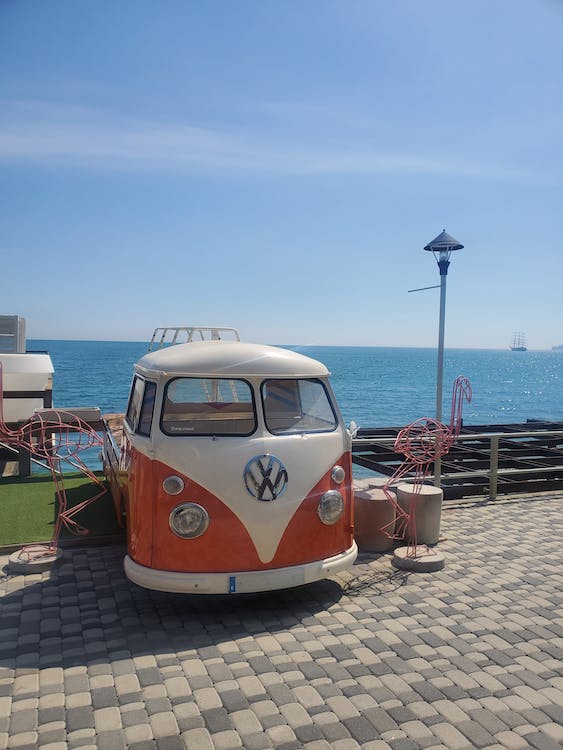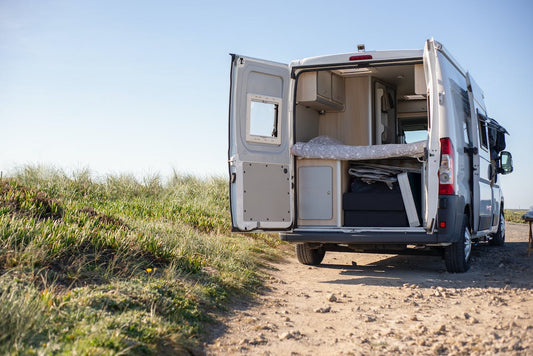In the spirit of Aussie explorers, nothing beats the freedom of hitting the road in your caravan or camper. But with that freedom comes the responsibility of maintenance, particularly keeping your roof leak-free.
Before you're hit with a downpour inside your mobile home, take proactive steps with liquid rubber sealant to re-waterproof your roof. Here's how to keep your caravan as rugged and ready as your adventurous spirit.
Step 1: Finding The Caravan Roof Leak
Before anything else, pinpoint where the trouble is starting. Leaky windows might wave a big flag saying "fix me!", but a leaky roof can be a bit more sneaky, often showing up far from its actual origin.
Pay special attention to the common culprits: joins, seams, and even small exposed screw holes. Use a methodical approach by removing valuables from your caravan, getting on the roof, and using water to trace the leak's path back to its source. This might require a buddy on the inside to tell you when and where the water starts to drip.
Step 2: Choosing the Right Waterproofing Sealant
The market's full of options, but for a sturdy caravan roof, you'll want something made to last the unique Aussie conditions.
- Butyl Mastic Sealants: Good for a quick fix, but not the long haul. They're easy, cheap, and work alright for temporary solutions.
- Silicone Sealants: A popular choice worldwide and for good reason. They're strong and elastic, ideal for both internal and external applications. Choose the right type for your needs: acetic cure for internal and neutral cure for external applications to avoid corrosion, especially important for the aluminium bodies of many caravans.
- Polyurethane (PU) Sealants: The tough guys in the sealant world. Perfect for modern caravans with fibreglass panels, these sealants are UV resistant and can be sanded and painted over, providing a durable, long-lasting solution.
But among these, Liquid Rubber sealant stands out for caravan roofs. It forms a waterproof, flexible membrane that's tough enough for the Australian sun and versatile enough for the variable shapes and materials of different caravans.
Step 3: Caravan Roof Leak Waterproofing Process
Now that you've got your sealant, let's walk through the repair process:
- Remove Old Caulk: Take out any old sealant with a plastic scraper to avoid damaging your caravan's surface.
- Clean the Area: Ensure the roof is spotless, dry, and free of debris. Any dirt or moisture can prevent the sealant from adhering properly.
- Apply the Sealant: Carefully cover the leaky area with liquid rubber paint, ensuring you follow the manufacturer's guidelines for the best results.
- Let It Dry: Be patient and let the sealant dry completely. This might take some time, but it's crucial for a waterproof seal.
- Test Your Work: Once it's dry, test your repair with water to ensure the leak is truly sealed.
And there you have it! With these steps, your caravan will be ready to tackle the Australian landscapes again, without the worry of unexpected indoor showers. Keep up with regular checks and maintenance, and your mobile home will be an oasis of comfort and adventure for all your travels. Happy caravanning!
FAQs
How do I identify the source of a leak in my caravan roof?
To locate a roof leak, focus on typical problem areas like joins, seams, and exposed screw holes. Remove valuables, then use water on the roof to trace the leak’s origin, potentially needing someone inside to indicate when and where water drips. This method helps find the exact leak source for effective repairs.
What type of sealant should I choose for waterproofing my caravan roof?
While there are various options like Butyl Mastic and Silicone Sealants, Liquid Rubber Sealant is the best choice for caravan roofs. It's specifically designed for the harsh Australian climate, forming a waterproof, flexible membrane that's durable and suitable for different caravan materials and designs.
What is the process for waterproofing a caravan roof with Liquid Rubber Sealant?
Start by removing old caulk with a plastic scraper. Then clean the area thoroughly to ensure it's dry and debris-free. Apply Liquid Rubber Sealant over the leak, following manufacturer guidelines. Allow it to dry completely before testing the area with water to confirm the leak is sealed.
How can I maintain the waterproofing of my caravan roof?
Regular maintenance is key. After sealing with Liquid Rubber, periodically check the roof, especially before and after long trips. Timely identification of potential issues can prevent leaks, ensuring your caravan remains a comfortable and dry space for your adventures.



